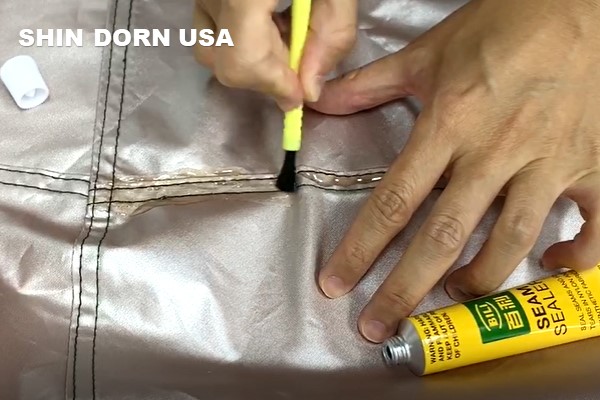When embarking on outdoor adventures, ensuring that your tent remains dry and reliable is crucial for a comfortable experience. One of the key maintenance tasks for any tent owner is seam sealing, a process that enhances the waterproof capabilities of your shelter by sealing the seams with a specialized adhesive called seam sealer. Seams, where fabrics are stitched together, are inherently vulnerable to water penetration. Seam sealing creates a barrier that prevents water from seeping through, keeping you dry in wet conditions. Here’s a comprehensive guide on when and how to seam seal your tent.
Why Seam Sealing is Important
Seams are the most vulnerable points in a tent’s waterproofing system. While the fabric of your tent might be waterproof, the stitching can create tiny holes that allow water to penetrate. Seam sealing is the process of applying a specialized adhesive to these seams, effectively closing these holes and ensuring your tent remains dry even in heavy rain. This not only enhances your tent’s performance but also extends its lifespan.
When to Seam Seal Your Tent
1. New Tents: While many new tents come with factory-sealed seams, it’s still advisable to check and reinforce them before your first trip. Factory sealing might miss spots or may not be as thorough as you’d like.
2. After Extended Use: Over time, the original seam sealer can wear off due to exposure to the elements, regular use, and general wear and tear. Regular inspection and maintenance can prevent leaks.
3. Visible Damage: If you notice peeling, cracking, or gaps in the existing seam tape or sealant, it’s time to re-seal the seams.
4. Before Major Trips: If you’re planning an extended trip or expect to encounter severe weather, it’s wise to preemptively seal your tent’s seams to avoid any unwelcome surprises.
Products for Seam Sealing
There are different types of seam sealers available, and the right choice depends on the material of your tent. For tents made from silicone-treated fabrics, use a silicone-based seam sealer. For tents with polyurethane coatings, use a urethane-based seam sealer.
How to Seam Seal Your Tent
Materials Needed:
– Appropriate seam sealer for your tent fabric
– Rubbing alcohol or mild soap and water
– Clean cloth or sponge
– Small brush or applicator
– Drop cloth or old sheet to protect your work area
Step-by-Step Guide:
1. Preparation: Set up your tent in a well-ventilated area, either indoors or in a shaded outdoor space. Ensure the seams you plan to seal are accessible and taut. Clean the seams thoroughly using rubbing alcohol or a mixture of mild soap and water. This removes dirt, oils, and old sealant residue, ensuring better adhesion of the new sealer. Allow the seams to dry completely before applying the sealer.
2. Application: Lay a drop cloth or old sheet underneath your tent to catch any drips. Using a small brush or applicator, apply a thin, even layer of seam sealer directly onto the seams. Focus on the stitched areas and any points where fabric panels overlap. Work slowly, ensuring the sealer penetrates the stitching and creates a solid barrier.
3. Drying: Allow the sealer to cure according to the instructions. This typically takes 24 hours but can vary based on the product and environmental conditions. Avoid packing or using the tent until the sealer is fully cured to prevent sticking and ensure maximum effectiveness.
4. Inspection: After the sealer has dried, inspect the seams for any missed spots or thin areas. Apply additional sealer as needed to ensure complete coverage.
Maintenance Tips
– Regular Inspections: Periodically check your tent’s seams for signs of wear and reapply sealer as needed.
– Proper Storage: Store your tent in a cool, dry place to prevent degradation of the fabric and sealant.
– Cleaning: Clean your tent gently with mild soap and water, avoiding harsh detergents that can damage the waterproof coating and sealer.
By taking the time to properly seam seal your tent, you can ensure it remains a reliable and dry shelter for all your outdoor adventures. This simple maintenance task can make a significant difference in your comfort and safety in the great outdoors.
Shin Dorn offers high quality PU-based seam sealant and silicone-based seam sealant filled in metal squeeze tubes. Glue applicators and/or brush tips are offered as well. We provide private label packaging services. Please contact Shin Dorn for free samples, pricing and further details: sales@shindorn.com
Related Products:
PU-based seam sealer (27103D)
Silicone-based seam sealer (18A017)

